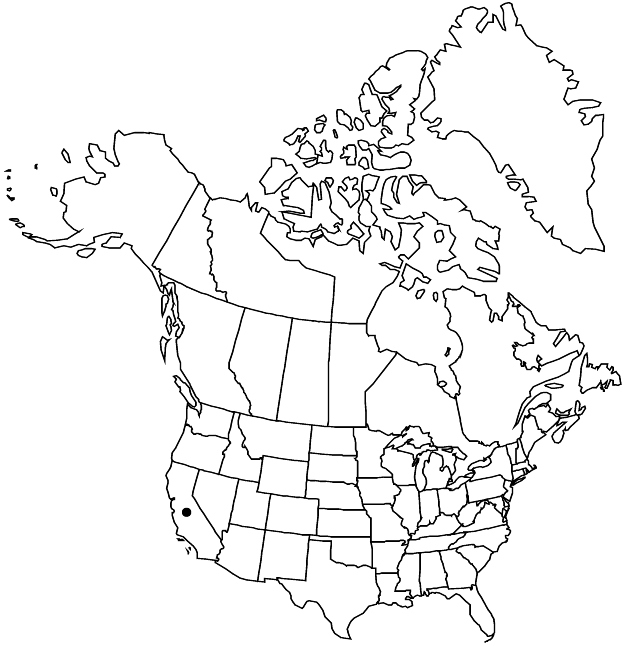Eriogonum umbellatum var. nelsoniorum
Phytologia 86: 151. 2004.
Subshrubs or herbs, spreading, 1–2.5 × 2–7 dm. Aerial flowering stems erect, 1–2 dm, thinly floccose, without one or more leaflike bracts ca. midlength. Leaves in rather loose rosettes; blade elliptic to oblong, (0.5–)1–1.5(–2) × 0.4–0.8 cm, densely white-tomentose to lanate abaxially, white-tomentose to floccose or rarely glabrate and greenish adaxially, margins plane. Inflorescences umbellate, 1–3 cm; branches 1–2 cm, thinly floccose, without a whorl of bracts ca. midlength; involucral tubes 3–4 mm, lobes 2–4 mm. Flowers (5–)6–7 mm; perianth bright yellow.
Phenology: Flowering Jul–Sep.
Habitat: Sandy to gravelly serpentine slopes, oak and montane conifer woodlands
Elevation: 1500-2300 m
Discussion
Variety nelsoniorum is somewhat similar morphologically to var. argus but probably more closely related to var. bahiiforme. It differs from both in consistently having a simple, rather than compound-umbellate, inflorescence. The large bracts that subtend the umbel are long (1–1.5 cm) and leaflike, like those of var. bahiiforme, but the distribution of tomentum of the leaf blades is like that of var. argus. All three occur on serpentine soils. However, var. nelsoniorum is found only in Humboldt and Trinity counties, or basically north of var. bahiiforme and southwest of var. argus. A series of small populations in the Scott Bar Mountains of Siskiyou County may prove to be var. nelsoniorum.
Selected References
None.
